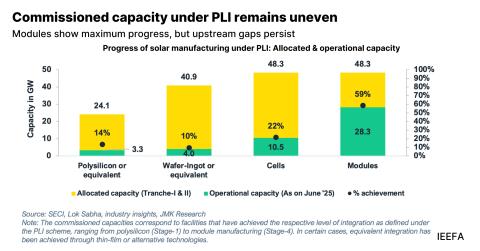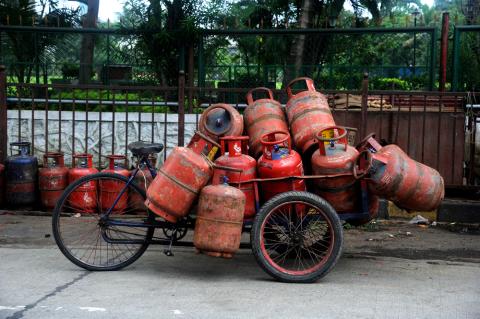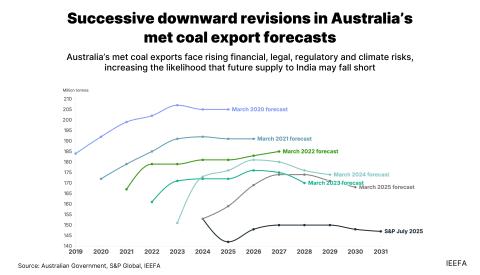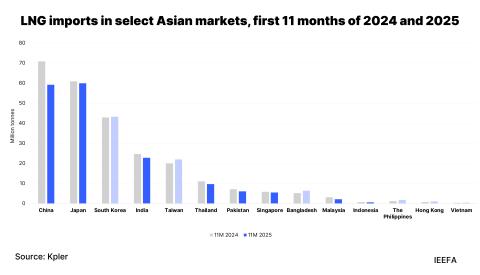Strengthening India's carbon market: The case for a stability mechanism in India's CCTS
Download Full Report
View Press Release

Key Findings
India’s forthcoming Carbon Credit Trading Scheme (CCTS), could face supply-demand imbalances and subdued price signals. This is an operational reality observed in several Emissions Trading Systems (ETSs) globally during their initial phases. Recognising this at the outset presents an opportunity to apply lessons from past experience and embed proactive institutional mechanisms that can help ensure the CCTS delivers lasting incentives for decarbonisation.
Lessons from other ETSs show that markets lacking Price or Supply Adjustment Mechanisms (PSAMs) suffer prolonged periods of low prices, investment inertia, and ultimately require costly, politically contentious reforms. In contrast, systems that integrate stability tools early on sustain stronger and more credible carbon prices.
This report recommends a stability mechanism tailored to India’s CCTS that comprises three elements: a consignment auction system for transparent, rule-based credit interventions; a vintage-based credit classification to limit the impact of older surplus credits on future prices; and an existing price corridor to guide interventions when carbon prices deviate from expected levels.
Mechanisms like consignment auctions, vintage rules, and price corridors can operate within the mandates of regulators. Introducing them early can build familiarity with the approach and facilitate smoother market evolution.
Executive Summary
The challenge: Ensuring market credibility from day one
India’s Carbon Credit Trading Scheme (CCTS) represents a transformative shift in the country’s climate policy architecture. Set to commence compliance in 2026, the CCTS adopts a baseline-and-credit system with facility-level intensity targets, allowing emissions to scale with economic growth while rewarding firms that outperform their benchmarks. This design offers considerable flexibility for a rapidly industrialising economy and marks a strong step in India’s decarbonisation journey, while also highlighting the importance of proactive measures in maintaining long-term market balance.
One of the key design considerations for the CCTS should be managing potential supply-demand imbalances. Unlike cap-and-trade systems, which have fixed emissions limits, the CCTS generates credits based on performance against intensity targets. When combined with moderate initial benchmarks, unlimited banking provisions and the front-loading of low-cost abatement opportunities, this architecture may have potential for surplus credit accumulation. Such oversupply can suppress carbon prices below levels necessary to drive meaningful decarbonisation investments.
This concern is informed by India’s experience with the Perform, Achieve and Trade (PAT) scheme. PAT was a pioneering step in market-based climate policy and created the institutional foundation for emissions trading in India. However, despite significant issuance of Energy Saving Certificates, trading volumes remained modest, underscoring how early design choices shape price formation.
International evidence: The cost of delayed intervention
Global carbon market experience provides compelling evidence that market stability mechanisms are essential. The EU’s Emissions Trading System (ETS) operated for 14 years before implementing its Market Stability Reserve (MSR), during which time carbon prices languished between €3 and €7 per tonne – insufficient to drive low-carbon investment. A study by Climate Strategies found that nearly two-thirds of the efficiency losses from the EU ETS’s early years could have been avoided with earlier intervention. Similarly, in Canada, Alberta’s Technology Innovation and Emissions Reduction system accumulated more than 53 million surplus credits by 2023, pushing market prices 40% below the official fund price. Australia’s Safeguard Mechanism operated for seven years with effectively zero carbon price signal before major reforms in 2023 finally introduced meaningful scarcity. In contrast, California’s cap-and-trade system, which implemented comprehensive stability measures from the outset, has maintained consistently stronger price signals.
The pattern is clear: markets that postpone stability mechanisms typically face significant challenges requiring disruptive corrections. Delayed intervention allows oversupply to become structural, weakens investment incentives, and necessitates more substantial reforms than would have been required otherwise. The political economy of these corrections is invariably more contentious than preventive measures embedded from the outset.
The solution: Price or supply adjustment mechanisms as market anchors
Price or Supply Adjustment Mechanisms (PSAMs) should ideally provide a transparent, rule-based, fiscally prudent and administratively efficient means of maintaining market balance without significantly altering the fundamental architecture of the CCTS. Rather than relying on ad hoc interventions or fiscally inefficient methods of buying back credits to modulate supply, PSAMs use predefined quantitative triggers to adjust credit supply when thresholds are reached. They act as stabilisers, containing both persistent oversupply and extreme scarcity, anchoring market expectations, and preserving space for genuine price discovery. PSAMs are necessary even in a system with well-aligned targets and allocations. Real-world markets inevitably face external shocks, regulatory uncertainty, overlapping policies, and liquidity constraints, all of which can destabilise prices for extended periods. By buffering against these imperfections, PSAMs ensure that carbon prices remain credible and predictable, sustaining the long-term investment signals required for decarbonisation.
While PSAMs have a rationale for implementation, a practical question remains: how can regulators effectively intervene to adjust credit supply within the Indian CCTS’s unique market framework? The EU ETS’s MSR demonstrates one approach, but its reliance on complex quantitative algorithms and comprehensive historical datasets may not suit India's upcoming CCTS infrastructure in the initial stages. Instead, the proposed framework integrates three complementary mechanisms – consignment auctions, vintage-based credit classification, and price corridors – specifically designed to operate within India's current institutional capabilities and gradually evolving data.
First, a consignment auction system can create the operational infrastructure necessary for supply interventions. Since the CCTS issues credits only after verified performance, unlike cap-and-trade systems with regular government auctions, a consignment mechanism allows firms to voluntarily submit earned credits to a government-managed platform. This preserves property/emissions rights while enabling price discovery, and provides regulators a transparent channel for rule-based interventions.
Second, a vintage-based credit classification system – elements of which are already present in the CCTS design including a tag for each Carbon Credit Certificate (CCC) with its issuance year, and limit compliance eligibility to recent vintages. This approach serves as a soft cap on banking accumulation, preventing long-dated surpluses from destabilising future price signals while maintaining intertemporal flexibility for firms. Older credits would either expire or face progressive devaluation according to predetermined schedules, ensuring banking serves its intended purpose of smoothing compliance costs rather than enabling indefinite speculation.
Importantly, vintaging should not be perceived as a mechanism to reclaim legitimately earned credits but as a standard governance feature of ETSs. By setting transparent, time-bound compliance windows, vintaging preserves ownership while ensuring that credits reflect timely abatement. This safeguards the value of credits and maintains a level playing field by preventing large legacy surpluses from weakening incentives for newer or smaller participants.
Third, a price corridor framework can guide PSAM interventions without imposing rigid price controls. Building on the CCTS’s existing price collar, this mechanism can trigger credit withholding when prices fall below the lower bound, and reserve releases when prices exceed the upper threshold. The corridor can be updated periodically to reflect evolving marginal abatement costs, inflation and India’s long-term decarbonisation trajectory.
The strategic imperative: Acting with foresight
The timing of PSAM implementation is as critical as its design. Timely adoption in the lifecycle of the ETS offers four distinct advantages. First, it enables proactive market management that can prevent the reactive corrections that have challenged other carbon markets, where accumulated imbalances required disruptive and politically contested reforms. Second, it helps maintain market balance during the formative years when market norms and expectations are being established, preventing structural oversupply from becoming entrenched. Third, it builds predictability into the system, enabling confident long-term investment decisions by signalling how the market will respond to various conditions. Fourth, it allows for gradual calibration, beginning with modest parameters that can evolve with market maturity rather than requiring dramatic interventions when imbalances become severe.
The institutional feasibility of a timely PSAM implementation in India is stronger than might initially appear. Each proposed mechanism – consignment auctions, vintage rules and price corridors – can operate within existing regulatory mandates and can be scaled with institutional capacity. The Bureau of Energy Efficiency has the technical foundation for credit tracking and auction management, while the Central Electricity Regulatory Commission has oversight capabilities. Embedding these mechanisms at the appropriate time avoids the political resistance that typically accompanies retrospective market reforms.
Building credibility through design
India’s CCTS is more than an environmental policy – it is a strategic climate policy instrument for aligning domestic industrial development with global low-carbon norms. Its success will be measured not just by compliance rates or administrative efficiency, but by its ability to generate credible, sustained price signals that direct capital towards clean technologies and operational improvements. This requires moving beyond the assumption that markets will naturally self-correct, and instead, recognising that effective carbon pricing depends on careful institutional design and active stewardship.
Integrating PSAMs at the onset of the CCTS would signal that India views carbon markets as a lasting part of its economic architecture, not a transitional experiment. Acting with foresight would position the CCTS as a global exemplar, balancing flexibility with discipline, supporting industrial competitiveness while driving decarbonisation, and maintaining credibility across economic and political cycles. The window for such proactive design is open, but it may not remain so indefinitely. Policymakers can learn from other markets’ experiences and incorporate insights in the CCTS design.
Ultimately, credibility and fairness must go hand in hand. Designing a fiscally prudent and administratively efficient PSAM not only preserves credit values through predictable rules but also ensures that the benefits of carbon pricing are distributed evenly across participants. By embedding such measures early, India can build a market that is both stable and equitable.

















